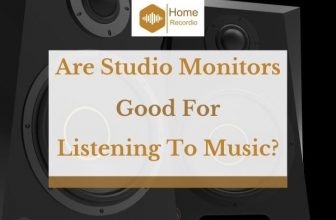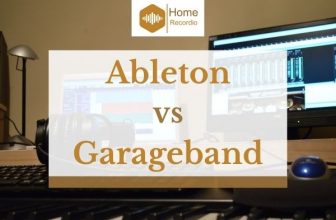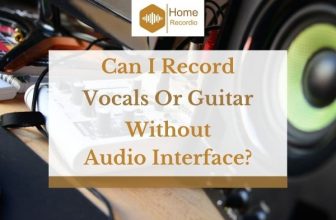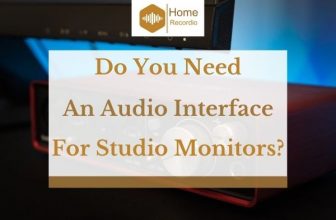6 Best Audio Interfaces For Classical Music In 2023
Are you looking to buy a new audio interface or want to replace the old one?
I understand there are lots of options in the market to choose from. Anyone can get confused while purchasing an audio interface for his studio.
You must want something for your studio that actually suits your music style and lasts long.
If you are looking for the best audio interface for classical music to place it in your studio, you landed in the right place.
Now that you are here, you should be relaxed. I have gathered some of the best audio interfaces for classical music to review for you.
You will get a detailed review of each product along with their pros and cons. Stay with me to the end so that you can find the best audio interface for your studio.
[amazon table=”7241″]Table of Contents
Focusrite Scarlett Solo (3rd Gen) USB Audio Interface
[amazon box=”B07QR6Z1JB”]Scarlett solo by Focusrite is one of the best audio interfaces in the market. It runs on 48V phantom power, having a resolution of 24-bit/192kHz. It comes with two balanced outputs made for ¼” connectors.
Scarlett solo contains one preamp in it. You will find crisp audio when recorded with Scarlett Solo. The presence of preamp will not produce any hissing sound even if you turn the gain to the max. Rest assured with that.
Focusrite offers you three different versions of the audio interface to choose from. These are Scarlett Solo, Scarlett 2i2, and Scarlett 4i4. You can get Scarlett solo studio and Scarlett 2i2 studio as well.
The difference between these three versions lies in the number of preamps, inputs and outputs.
Scarlett solo and Scarlett 2i2 come with two balanced outputs made for ¼” connectors while Scarlett 4i4 comes with four balanced outputs created for ¼” connectors.
When it comes to inputs, Scarlett solo has 1 line and instrument inputs. Scarlett 2i2 has 2 line and instrument inputs, while Scarlett 4i4 has two instrument and 4 line inputs.
All other features are the same for these three versions of Focusrite audio interfaces.
- This audio interface holds the finest preamp in it.
- You can get the best quality of audio recording with this audio interface.
- It will cause no harm to your CPU even at a small buffer size.
- It is an excellent addition to your studio.
- It doesn’t work well when you have to record multiple instruments simultaneously.
- It is powered by USB, which will be a problem if your computer device lacks enough USB slots.
- There is no MIDI output or input.
Check Price and Reviews on Amazon
Video: “Scarlett 2i2 3rd Gen Review and Test”
PreSonus AudioBox USB 96
[amazon box=”B07L9MWWDK”]This audio interface is really suitable for musicians who want to create high-definition recording. It is really compact and ideal for virtually any computer and Mac recording software.
It offers 24-bit resolution along with 96kHz sampling rates.
You will get zero-latency monitoring via an internal analog mixer with this excellent AudioBox USB 96. This audio interface offers two mic inputs which give off high-performance.
It is completely reliable due to its heavy-duty steel chassis. It is portable, which means it can be used anywhere.
With its loud headphone output, you can listen to your music loud and clear even in noisy environments.
- It has Class-A preamps.
- It has its own level dials with clipping indicators.
- Headphone monitoring has low latency.
- It has excellent portable audio or MIDI interface.
- HD7 headphones are convenient to use.
- There is no line-level input in this audio interface.
Check Price and Reviews on Amazon
Video: “PreSonus AudioBox USB 96 Audio Interface – Overview and Demo”
M-Audio AIR 192|6 USB Audio / MIDI Interface
[amazon box=”B07YYX7K6R”]This 192|6 interface comes with a complete package of software with which you can get started quickly.
You can create audio recordings of 192kHz/ 24-bit. This interface is easy to use, and it lets you record two channels at once.
There are 5-pins MIDI in and out connections available, and it includes crystal preamps and premium components.
It has two dedicated XLR + ¼” balanced combo inputs, and two ¼” instrument inputs. M-Audio comes with three versions of the audio interfaces; these are AIR 192|4, AIR 192|6, and AIR 192|8.
AIR 192|4 doesn’t contain MIDI input and output, while both the other versions have this feature. All other features are the same in these interfaces, but 192|8 includes an extra -10dB mic pad.
- You can connect two microphones or two instruments with this audio interface.
- It records high-quality audio.
- With MIDI, you are able to control external instruments like drum computers.
- You cannot control more than two tracks simultaneously.
- There are no additional outputs available with this audio interface.
Check Price and Reviews on Amazon
Video: “SOUND TEST & REVIEW M AUDIO Air 192 6 USB Audio Interface”
Steinberg UR-RT2 Interface
[amazon box=”B07C2JN2FS”]This interface by Steinberg has cross-platform compatibility for Windows, iOS, and macOS. It is highly portable and well-built. It will be an excellent addition to your studio if you are willing to record lots of audios.
The RT series by Steinberg’s comes with Neve transformers along with Yamaha D-Pre preamps. Monitoring offered by UR-RT2 is latency-free, and DSP powered.
It has USB 2.0 connectivity. This interface is compatible to use for all types of audio editing and music production.
It supports the phantom power of +48V and 4 x 2 analog input output and MIDI I/O. Create audio recordings of resolution 192kHz/24-bit with this UR-RT2 interface.
- The preamps it contains are great.
- All the components are of high-quality.
- The software is not up to the mark, but it works reasonably nice.
Check Price and Reviews on Amazon
Video: “Steinberg UR-RT2 USB Audio Interface Review / Test”
Universal Audio Apollo Twin X DUO Audio Interface
[amazon box=”B07Y46QFLQ”]Universal Audio claims to provide elite-class audio conversion with Apollo Twin X DUO. This interface can perform well in its class within a range of 127dB D/A.
This Apollo Twin allows all the musicians to track or mix the sound with its elite-class conversion.
It has two line inputs and outputs along with two Unison Mic preamps. It is compatible with both Mac and Windows.
You can also download the LUNA recording system for free which will transform all the Apollo and Arrow interfaces equipped by Thunderbolt into music creation and recording systems for Mac.
- With its one headphone output and two mic preamps, this device is compatible with performing serious recording tasks.
- It gives high-quality audio.
- Channel DSP pairing enables highly complex plug-in chains in the console utility.
- It requires a power supply for functioning.
Check Price and Reviews on Amazon
Video: “Apollo Twin Duo MK2 Unboxing + Set-Up (Best Audio Interface?)”
Mackie Big Knob Studio
[amazon box=”B01N21DGR2″]With this big knob studio by Mackie, you can get a recording resolution of 96kHz/24-bit.
This fantastic interface offers independent gain trim on all the outputs and inputs. You can get two separate outputs for headphones each with separate level control.
It contains dual Onyx preamps. You will get zero-latency overdubbing. It is one of the best-designed controllers out there.
This fantastic controller allows CD players and guitar preamps to be played through monitors without the need to switch to DAW.
Big knob comes in three versions. Big Knob Passive, Big Knob Studio, and Big Knob Studio+.
The difference between these three lies in their weight, dimensions, and recording outputs. All other features are almost the same, especially in Studio and Studio+.
- This controller includes a built-in mic.
- It has excellent quality of audio and best options for routing.
- Connectors are all balanced.
- The design is impressive with large controls and best indication for LED.
- There is no surround mode.
Check Price and Reviews on Amazon
Video: “Mackie Big Knob Studio Monitor Controller Review”
Buying Guide
It is essential to consider a few things before you purchase an audio interface, and fortunately, there are some smart ways to buy an audio interface.
You need to consider the number of inputs and outputs, preamps, and interface’s connectivity to the computer.
Inputs and outputs
Different interfaces come with different I/O, so you need to purchase it according to your need. Ask yourself about how many instruments you need to connect to the interface at once.
Normally interfaces come with two inputs that work fine for microphones and instruments. If you need to use multiple microphones at a time, get yourself a lot of preamp-equipped inputs.
An audio interface usually contains a stereo output and a separate headphone output. But sometimes, bands or production duos need to connect multiple headphones at a time.
Thus, you should consider how many I/O you want before getting an audio interface.
Preamps
In case you want to use condenser microphones, note it down that there should be at least one input channel with a switch of phantom power.
You can normally find one to two preamps in an audio interface. A preamp greatly affects the quality of sound. With the increase in the number of preamps, the price of the interface also increases.
Connectivity
You need to connect the audio interface to your computer in order to make it functional. There is standard connectivity, which is via USB 2.0.
Many audio interfaces connect via USB 2.0. This works well for beginner level connections or home studios.
Some other connectivity options available in high-end audio interfaces include Thunderbolt, USB-3, USB-C, and Ethernet.
It is essential to look for the type of port that your computer has to avoid connectivity problems.
Conclusion
Audio interfaces indeed present simple and affordable solutions to many problems in your studio.
With a good audio interface, anyone can record good quality music with the ease of their home studio.
I have reviewed some of the best audio interfaces for classical music. All of them offer incredible features that are suitable both for home studio and professional use.
Pick up the best interface according to your needs and enjoy recording high-quality music.




